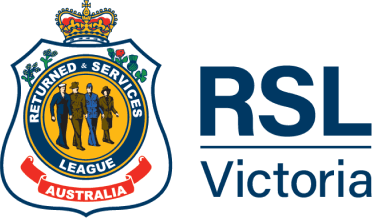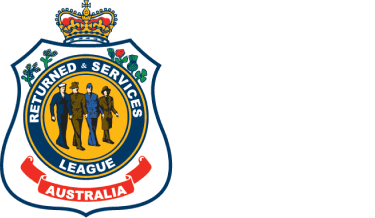Photos: The State Library of Victoria and Haper Collins
VOL 58 NO.2 June 2019
The flow-on effects of wartime service have a huge impact.
After Japan entered WWII in December 1941, Australia was faced with an urgent problem - a desperate need to increase its armed forces and what that deployment of even more able-bodied men would mean for the ongoing needs of other important industries at home.
With our nation’s agricultural labour force diverted to the war industry and armed services, the need to harvest food crops, combined with the demand for flax - used for the production of clothing, parachute harnesses, ropes, tarpaulins and even as covers for gliders used for troop transportation - became critical. To meet the workload, the Australian Women’s Land Army (AWLA) was born.
The idea to utilise the skills of female farm workers to maintain local agricultural production was modelled on the groups of women’s land organisations founded in the United Kingdom during both the First and Second World Wars.
In Australia, a peak national body, formed on July 27, 1942, fell under the official jurisdiction of the Director General of Manpower, although the ongoing organisation of the AWLA was managed by individual states and territories.
For author Victoria Purman, discovering the existence of this important group of Australian women was the inspiration for her new book, The Land Girls. Rather than create a real-life account of this fascinating part of Australia’s wartime history, Purman undertook extensive research to spark her imaginative skills as a fiction writer and the result is a moving story of love, loss and survival against the odds.
For Purman, delving into the stories of what life must have been like in WWII-time Australia, started very close to home.
The book’s blurb pays homage to her husband’s family, whose hands-on efforts both at home and overseas formed a proud contribution.
“The Land Girls is dedicated to the Mobbs family – my mother-in-law, Vilma’s family. In my previous novel, The Last of the Bonegilla Girls, I told the stories of migrants like my own mother and her family, and, in The Land Girls, I wanted to tell the story of those left behind in Australia, and what they got up to during the war,” Purman says. “I was lucky enough to have access to the personal letters, telegrams and memorabilia of Vilma’s brother, Reg. He served in Palestine and New Guinea and his letters home – and the family’s letters to him – were a wonderful insight into the language they used, the things they wrote about, and the yearning they captured for a safe return.”
Purman admits that, before stumbling across an online reference to the Australian Women’s Land Army, she had no idea that Australian women played such a valuable role in our country’s survival.
"Of course, I’d heard of the UK Land Girls – there are lots of books and even a TV mini-series – so I went down the Google rabbit hole, discovered this incredible part of our history and I just knew I had to write about it."
Victoria Purman

Access to the Sir Keith Murdoch Sound Archive at the Australian War Memorial was crucial.
“I listened to oral histories and read transcripts of some of the Australian Land Girls, which were recorded in 1990, and they gave me an insight into the women, the work they did, and how they were affected by their experiences,” Purman says.
As a result of that research, she based the book’s three main characters – Flora, Betty and Lilian – on the events and emotions she discovered in these oral history stories.
“I dived deep into newspapers of the time, to capture the movies people of the era watched, which radio programs they tuned in to, in order to keep up-to-date on what was happening in the war, and even looked at recipes of the era, too.”
As Australia’s involvement in WWII continued, AWLA enrolment numbers peaked in December 1943, with 2,382 women as permanent members and an additional 1,039 auxiliary members.
For those women working the harsh Australian landscape, it was an exhausting workload. With the average AWLA member working 48 hours per week, pay started at 30 shillings per week - the minimum wage at the time. The women who joined the AWLA were assigned hard, physical labour that included a variety of agricultural work, such as fruit and vegetable growing and harvesting, as well as raising poultry, pigs and sheep.

For the bulk of the AWLA workforce - including women as young as 16 - life on rural farms was a huge change from city living. Life in the AWLA had the added hardships of receiving less pay than their male counterparts, and being forced to deal with negative attitudes about their skills and capabilities. The resulting ongoing pressure on our Land Girls continued until 1981 when they were finally granted acceptance to march on ANZAC Day.
As Purman’s fictional account of life as a Land Girl shows, though, the women’s time serving their country did allow some time for socialising and, for many Australian women thrown together on rural farms across the country, the friendships formed during these tough times were able to endure.
What Purman is passionate about is that stories that tap into Australia’s rich wartime history - whether real or imagined - should never stop being told.
"Since writing this book, I’ve met so many people who are related to Land Girls, and in Ballina in NSW recently, I had the enormous good fortune to meet a real Land Girl."
Victoria Purman
“I loved hearing her stories of her time in the Australian Women’s Land Army. In Bundaberg, I met Carol, the daughter of a Land Girl. Her parents met when her Mum left Sydney to work on a property.”
And that story, Purman is pleased to say, had an happy ending.
“Her Mum fell in love with a local man and never made it back home.”
The AWLA was disbanded on 31 December, 1945. In 1997, many members became eligible for the Civilian Service Medal.

